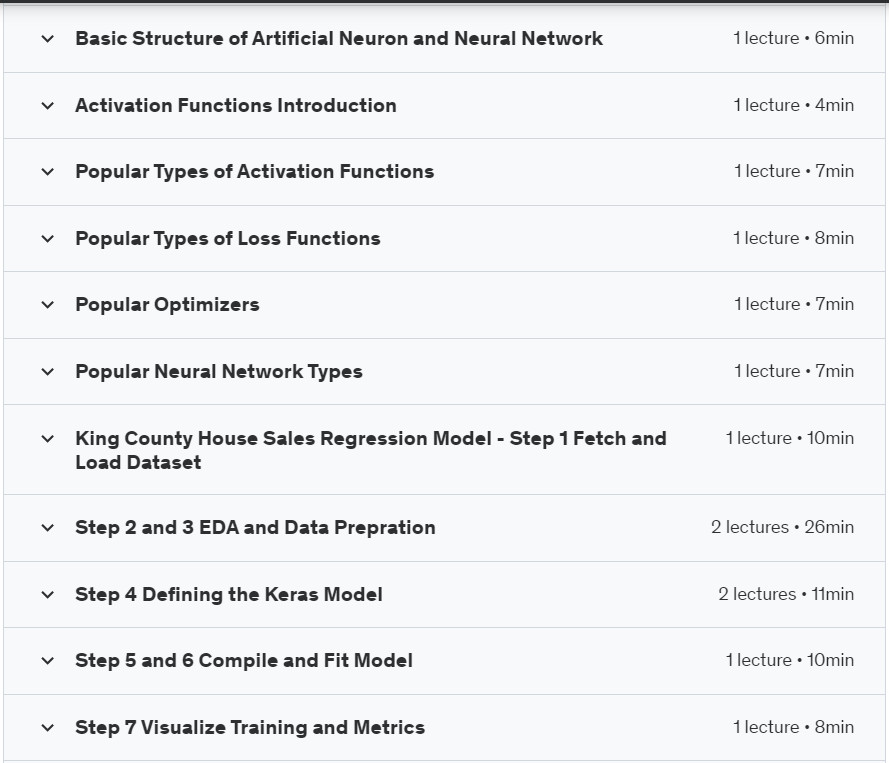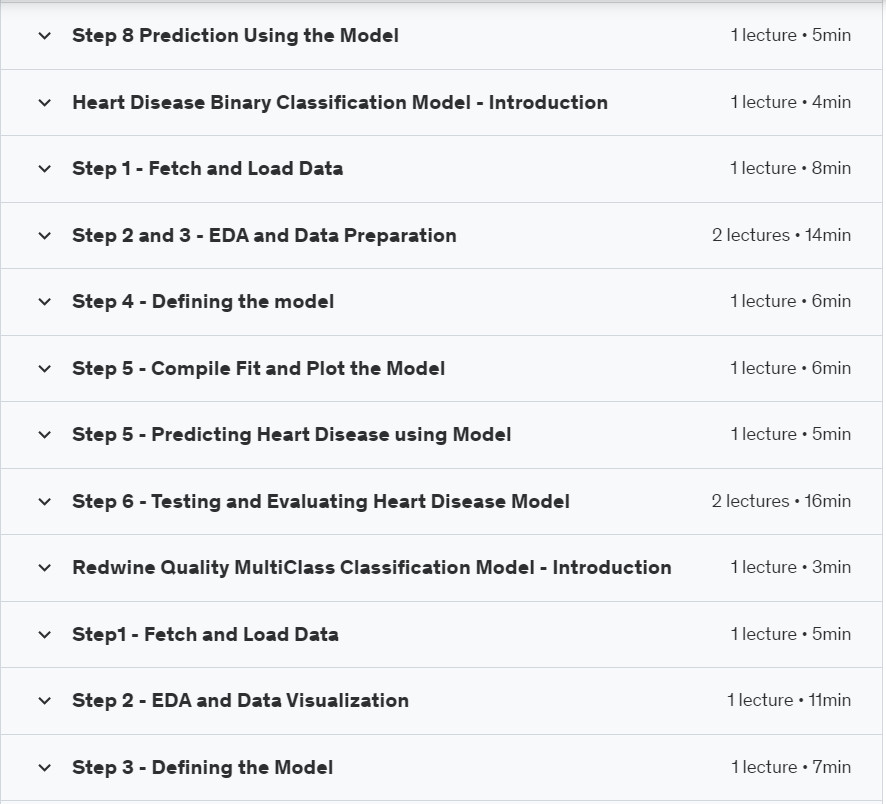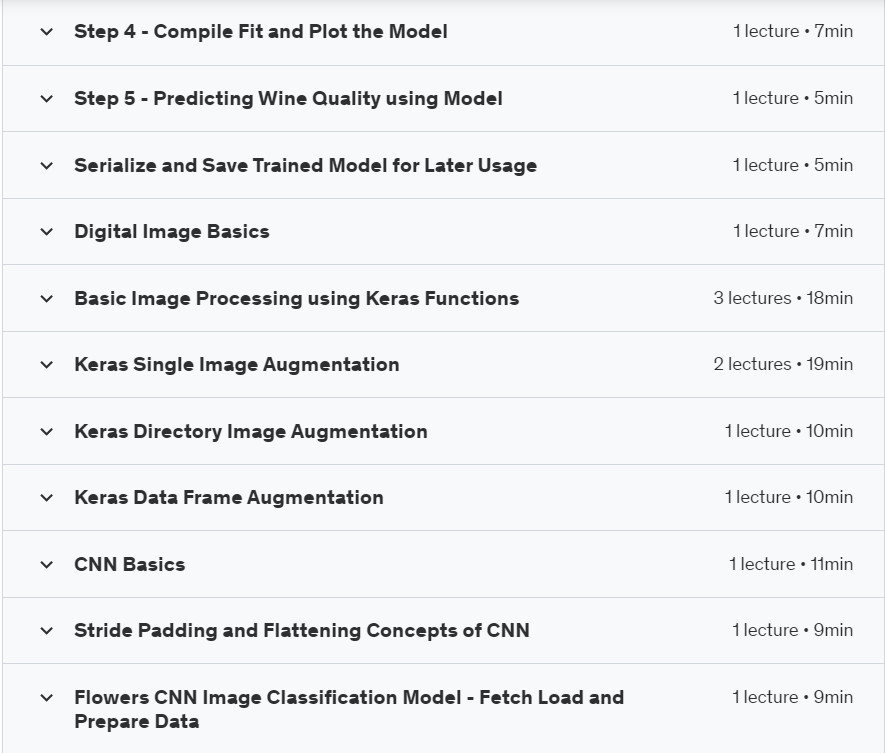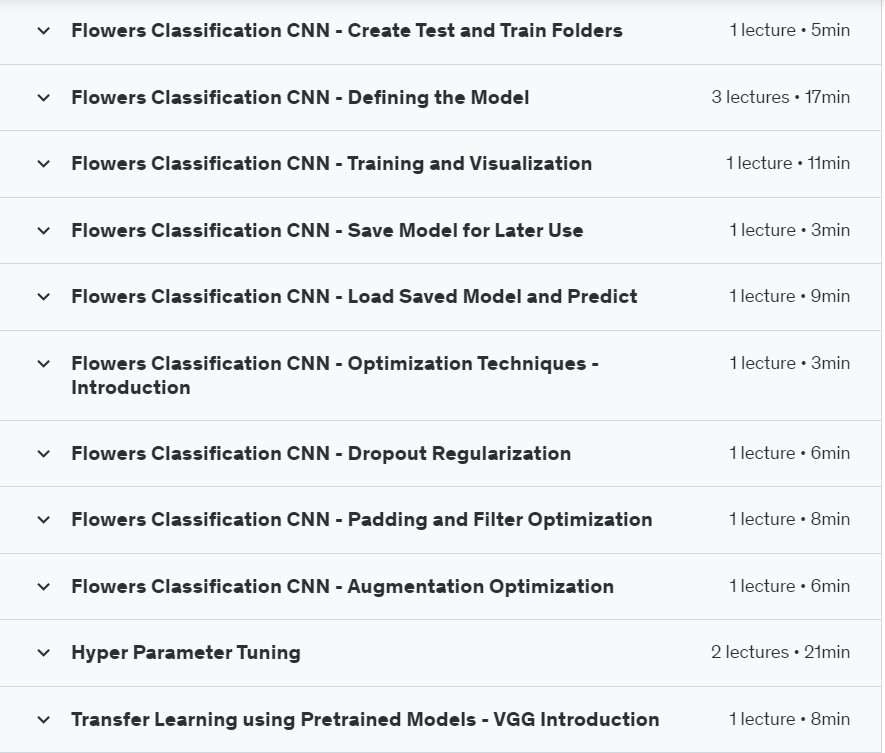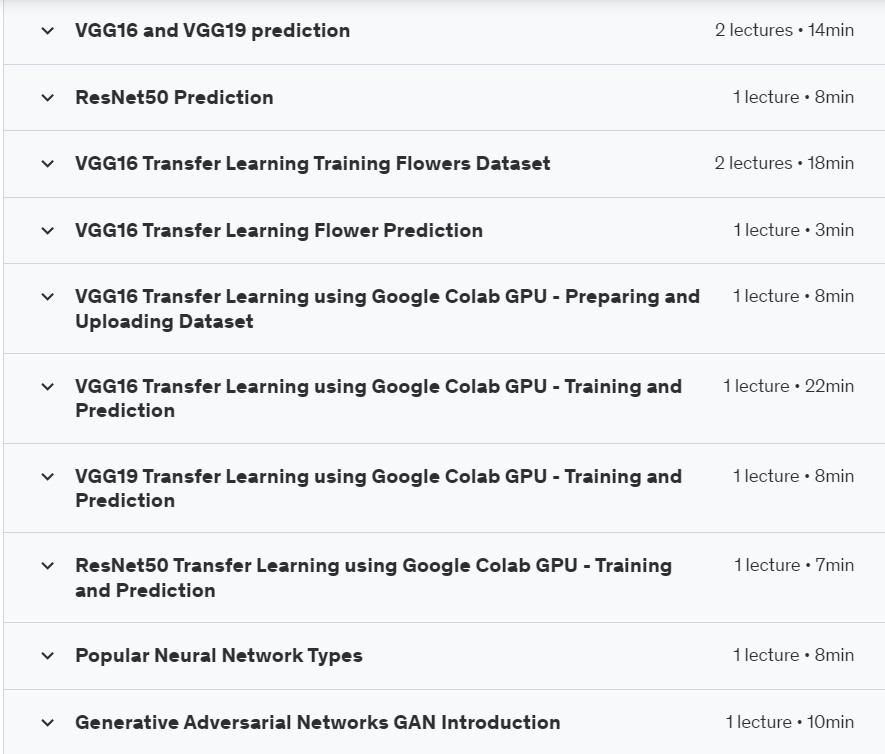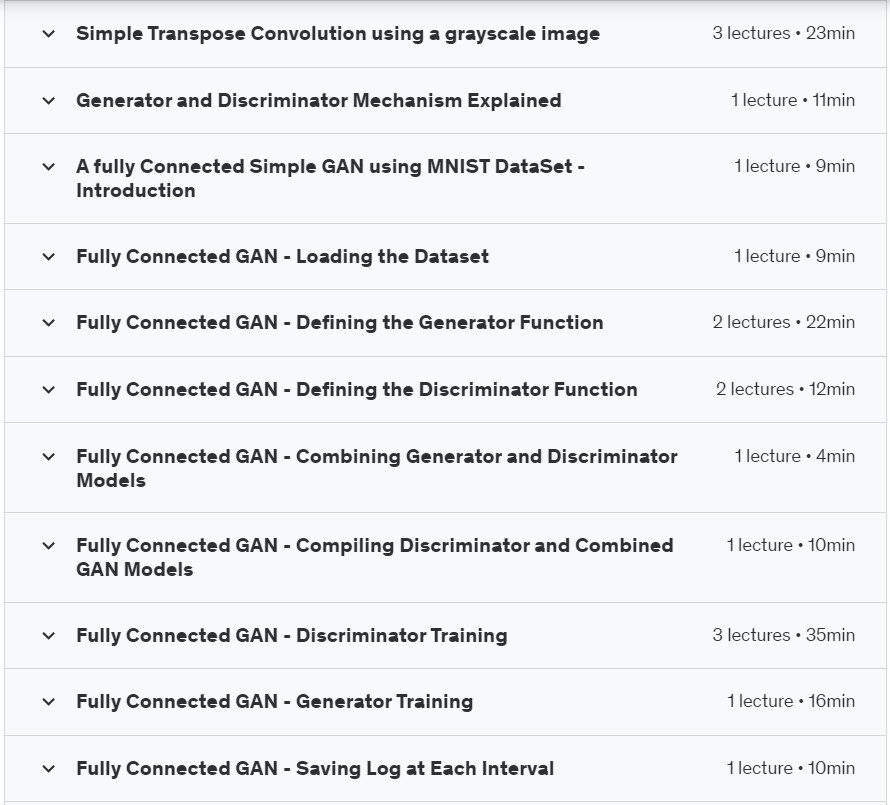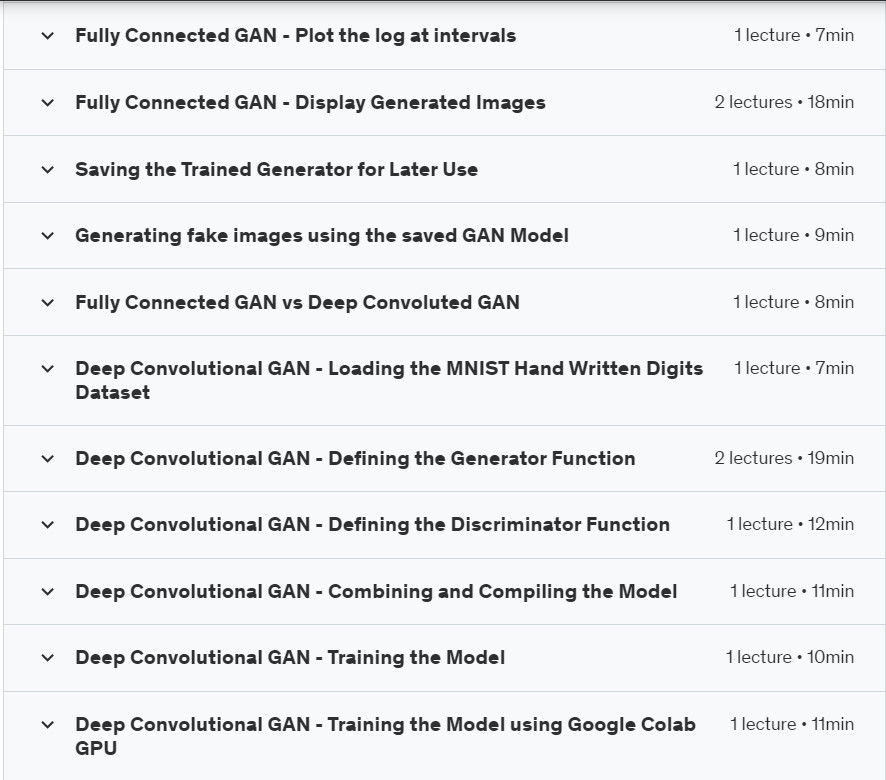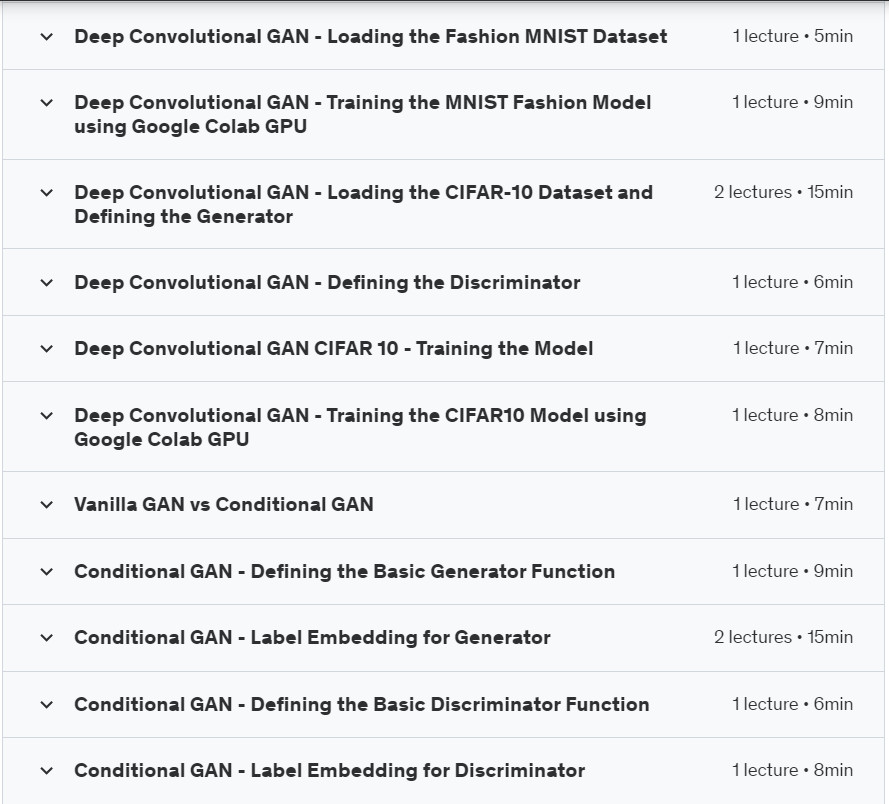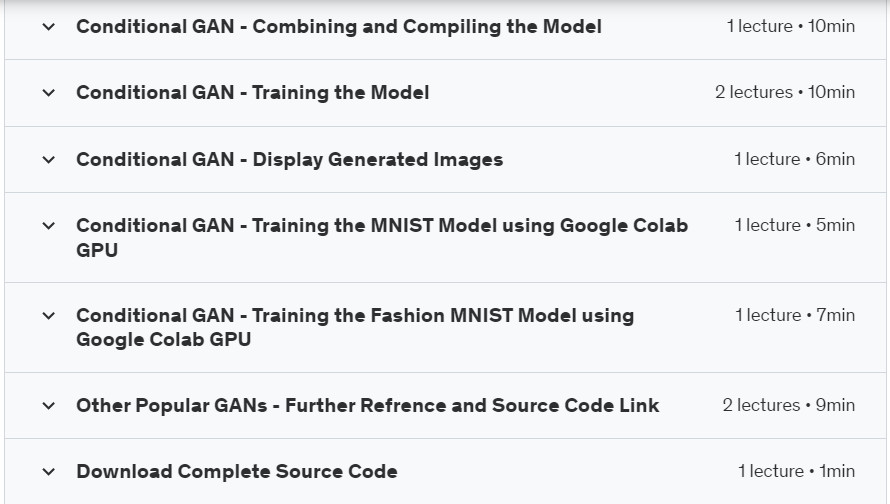Description
Keras Deep Learning course & Generative Adversarial Networks (GAN) Hello and welcome to my new course, Deep Learning with Adversarial Networks (GAN). This course is divided into two halves. In the first half, we will discuss deep learning and neural networks, and in the second half, in addition, we will discuss generative adversarial networks or GAN, or we can call it gan. So let’s see what are the topics covered in each module. First, deep learning.. As you know, the field of artificial intelligence is broadly divided into deep learning and machine learning. In fact, deep learning itself is machine learning, but deep learning with its own deep neural networks and algorithms tries to learn high-level features from data without human intervention. This makes deep learning the foundation of all future intelligent self-systems. I start with very basic things to learn like learning the basics of the programming language and other support libraries first and continue with the main topic. Let’s see what interesting topics are included in this course. First, we will have an introductory theoretical session on artificial intelligence, machine learning, deep learning based on artificial neurons and neural networks. After that, we’re ready to prepare our computer for Python coding by downloading and installing the Anaconda package and checking that everything is installed properly. We’ll be using a browser-based IDE called Jupyter Notebook for our next coding exercises. I know some of you may not come from a Python based programming background. The next few sessions and examples will help you acquire the basic Python programming skills to continue with the sessions in this course. Topics include Python allocation, flow control, list functions and tuples, dictionaries, functions, and more. We then begin by learning the basics of the Python library Numpy, which is used to add support for multidimensional arrays and matrices, along with a large collection of classes and functions. Then we will learn the basics of the matplotlib library, which is a Python plotting library for corresponding numerical expressions in NumPy. And finally, the pandas library, which is a software library written for the Python programming language for data manipulation and analysis. After the basics, we install the theano, tensorflow, and API deep learning libraries to deal with these, called Keras. We will write all our future code in keras. Then, before we dive into deep learning, we’ll have a detailed theory session on the basic structure of an artificial neuron and how to combine them to form an artificial neural network. Then we’ll see what exactly an activation function is, the different types of the most popular activation functions, and the different scenarios we have for using each of them.
After that, we’ll look at the loss function, the different types of popular loss functions, and the different scenarios we have for using each of them. Like activation and loss functions, we have optimizers that optimize the neural network based on training feedback. We’ll also look at the details of the most popular optimizers and how to decide which one to use. Then finally we will discuss the most popular types of deep learning neural networks and their basic structure and uses. In addition, this period is exactly divided into two halves. The first half is about building deep learning multilayer neural network models for text-based datasets and the second half is about building convolutional neural networks for image-based datasets. In the text-based simple feedforward multilayer neural network model, we start with a regression model to predict house prices in King County, USA. The first step is to download and load the dataset from the kaggle website into our application. Then as a second step, we do an EDA or an exploratory data analysis of the uploaded data and then prepare the data to feed it to our deep learning model. Then we define the Keras deep learning model. Once we have defined the model, we then compile the model and later put our dataset into the compiled model and wait for the training to complete. After training, the training history and metrics such as accuracy, loss, etc. can be evaluated and visualized using matplotlib. Finally we have our pre-trained model. We will try to predict King County real estate prices using our deep learning model and evaluate the results. It was a text-based regression model. We now proceed with a text-based binary classification model. We will use a derived version of the Heart Disease dataset from the UCI Machine Learning Repository. Our goal is to predict whether a person will develop heart disease or not. The same steps are repeated here. The first step is to fetch and load the dataset into our program. Then as a second step, we perform an EDA or an exploratory data analysis of the uploaded data and then prepare the data to feed it to our deep learning model. Then we define the Keras deep learning model. Once we have defined the model, we then compile the model and later put our dataset into the compiled model and wait for the training to complete. After training, the training history and metrics such as accuracy, loss, etc. can be evaluated and visualized using matplotlib.
Finally we have our pre-trained model. We will try to predict heart disease using our deep learning model and evaluate the results. After the text-based binary classification model. Now we proceed with a text-based multi-class classification model. We will use the red wine quality dataset from the kaggle website. Our goal is to predict the multiple categories into which a redwine instance can be placed from the learning obtained from this dataset. The same steps are repeated here. The first step is to fetch and load the dataset into our program. Then as a second step, we perform an EDA or an exploratory data analysis of the uploaded data and then prepare the data to feed it to our deep learning model. Then we define the Keras deep learning model. Once we have defined the model, we then compile the model and later put our dataset into the compiled model and wait for the training to complete. After training, the training history and metrics such as accuracy, loss, etc. can be evaluated and visualized using matplotlib. Finally we have our pre-trained model. We will try to make a prediction for wine quality with a new set of data and then evaluate the classification results. We may spend a lot of time, resources and efforts to train a deep learning model. We will learn about techniques for saving a pre-trained model. This process is called serialization. We will first serialize a model. Then load it into another program and make the prediction without having to repeat the tutorial. It was about text-based data. Now we move on to image-based data. In the introductory session, we will have an introduction to the basics of digital image, where we will learn about the composition and structure of a digital image. Then we will learn about basic image processing using Keras functions. There are many classes and functions that help image preprocessing in the Keras library api. We will get to know the most popular and useful functions one by one. Another important and useful image processing function in keras is Image Augmentation, where slightly different versions of images are automatically created during training. We will learn about boosting single image, boosting images in directory structure as well as boosting data frame image. Then another theory session on the basics of a Convolutional Neural Network or CNN. We will learn how the main layers of CNN work such as convolution layer, pooling layer and fully connected layer. There are concepts like Stride Padding and Flattening in convolution for image processing. We will also learn them one by one. Now we are all ready to start with our CNN model. We will design a model that can classify 5 different types of flowers when presented with an image of a flower in each of these categories. First, we will download the dataset from the kaggle website. Then the first step will be to download and load this data set from your computer into your program. Then as a second step, we need to manually split this dataset for training and then test the model. We label them in training and test folders with each class in separate folders. Then we define the Keras deep learning model. Once we have defined the model, we then compile the model and later put our dataset into the compiled model and wait for the training to complete. After training, the training history and metrics such as accuracy, loss, etc. can be evaluated and visualized using matplotlib.
What you will learn in Keras Deep Learning & Generative Adversarial Networks (GAN) course
-
Generative Adversarial Networks (GAN) using Python with Keras
-
Learn deep learning from scratch to expert level
-
Python Generative Adversarial Networks and Cross and Deep Learning
-
Keras Deep Learning & Generative Adversarial Networks (GAN)
This course is suitable for people who
- Deep learning and generative adversarial networks (GAN) from beginner to expert level. For all beginners who want to learn about deep learning and generative adversarial networks
Keras Deep Learning & Generative Adversarial Networks (GAN) course specifications
- Publisher: Udemy
- teacher: Abhilash Nelson
- Training level: beginner to advanced
- Training duration: 16 hours and 0 minutes
- Number of courses: 125
Keras Deep Learning & Generative Adversarial Networks (GAN) course topics on 9/2023
Keras Deep Learning & Generative Adversarial Networks (GAN) course prerequisites
- No programming experience required. Just be enthusiastic about Generative Adversarial Networks (GAN) and Deep Learning
Course images
Sample video of the course
Installation guide
After Extract, view with your favorite Player.
Subtitle: None
Quality: 720p
download link
File(s) password: www.downloadly.ir
Size
10.8 GB
